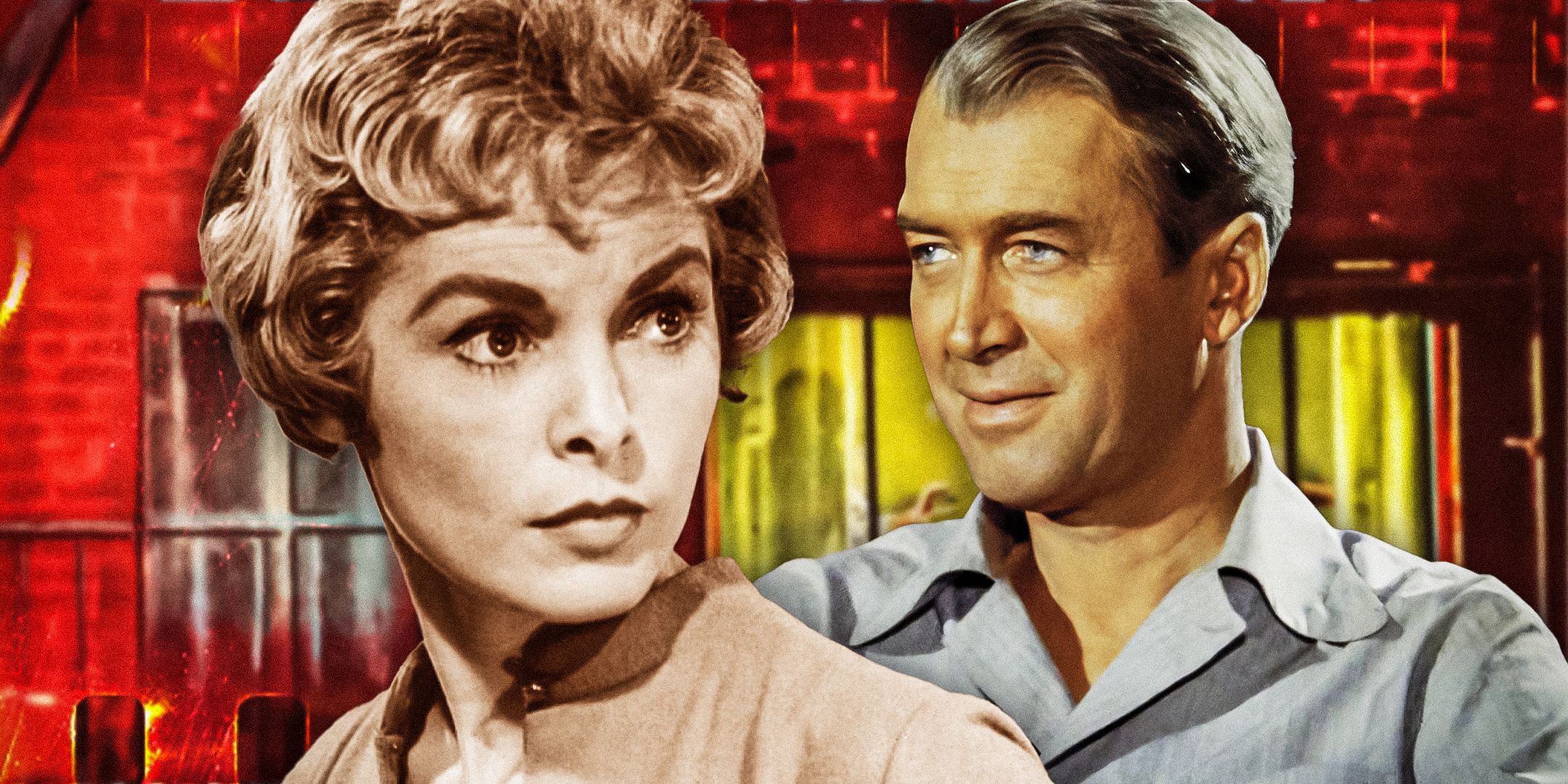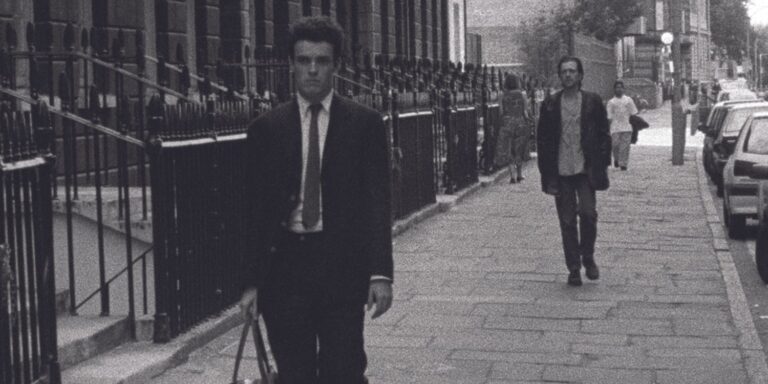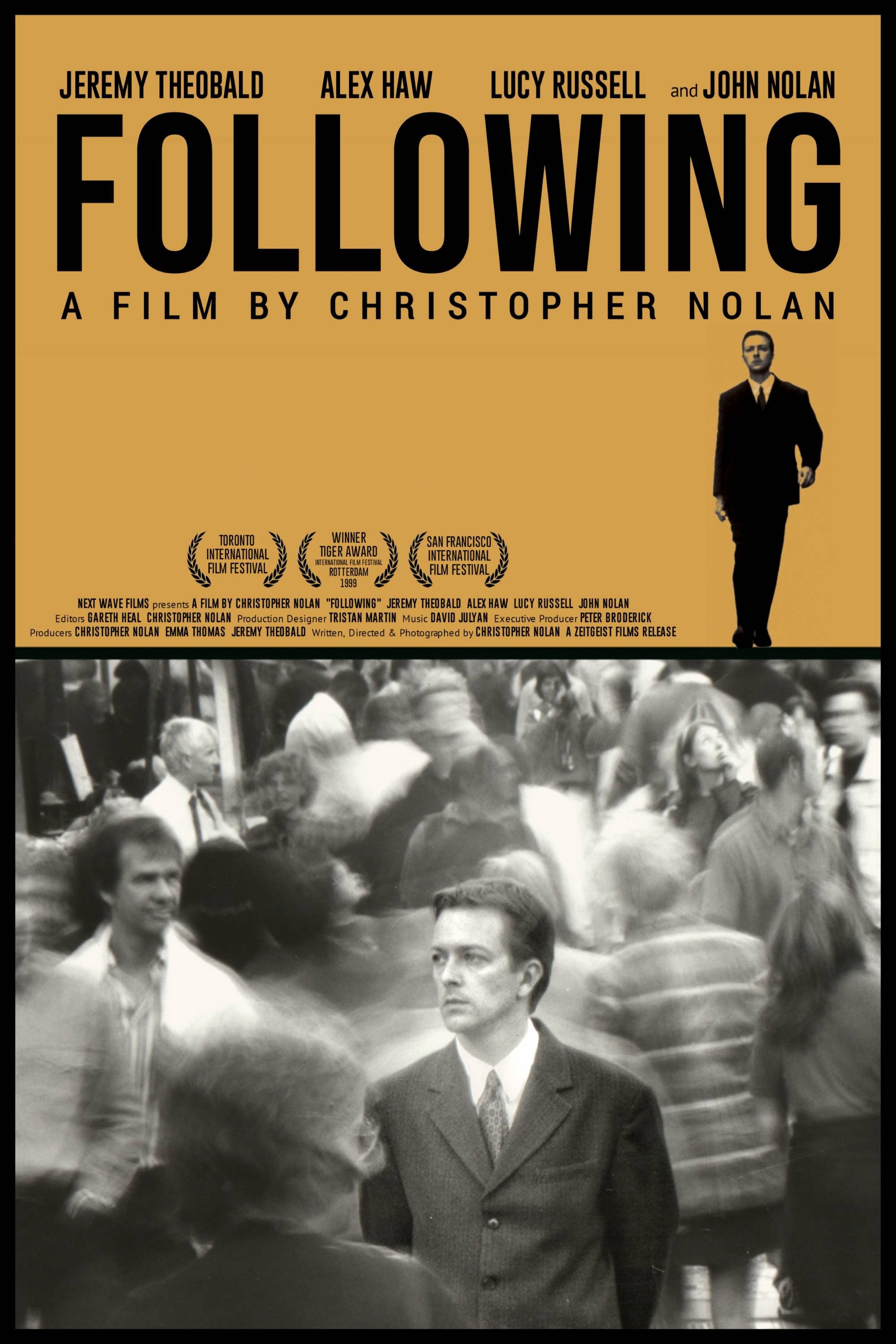[ad_1]
Whereas the place to begin for Christopher Nolan’s profession as a filmmaker is usually thought-about to be his 2000 film Memento, Nolan’s first movie was truly his 1998 ardour challenge Following. This little-known debut characteristic from the director is a Hitchcockian neo-noir crime thriller that was shot in black-and-white on the streets of London, and value simply $6,000 to make. Nolan shot the film over the course of a number of weekends, whereas he earned a residing as a videographer for enterprise throughout the week. Like virtually all of his motion pictures, it was produced by his spouse, Emma Thomas.
Following is a darkly mysterious crime story that makes use of progressive camerawork juxtaposed with voiceover narration to invoke the bodily act of stalking. In each thematic and formal phrases, it owes an unlimited quantity to among the best movies of Alfred Hitchcock’s legendary profession as a director. Numerous recognizable Hitchcock tropes pop up all through Christopher Nolan’s first movie, with Nolan overtly signposting the good director’s affect over his work. Provided that Hitchcock isn’t cited as one in every of Nolan’s directorial inspirations, Following is the clearest indication we have now that the enduring filmmaker has been a significant affect on his work.
Christopher Nolan’s First Film Is Full Of Alfred Hitchcock Tropes
Following Clearly Signposts Its Debt To Hitchcock
If ever followers of Alfred Hitchcock have been searching for a contemporary film that integrates parts of his work, Following is that film. Christopher Nolan’s 1998 neo-noir thriller is pretty simple about acknowledging the debt it owes to the incomparable grasp of noir cinema, because it options numerous tropes considered to be Hitchcock trademarks.
A number of movie critics famous the similarity between Following and Hitchcock’s motion pictures on the time of its launch.
Amongst different Hitchcockian easter eggs, Following works a botched housebreaking into its plot, which facilities on a wrongly-accused protagonist who’s framed for a critical crime by misdirection and mistaken id. The theme of voyeurism, a key side of Hitchcock’s filmmaking, is manifested all through the film by Nolan via each its kind and its content material. As if we wanted extra proof that Alfred Hitchcock looms massive over Following, Nolan names one of many movie’s characters “The Blonde,” and the connection alone is a big key to her destiny.
Alfred Hitchcock’s Affect Is Additionally Obvious In Nolan’s Different Films
Hitchcock Knowledgeable Nolan’s Preoccupations With Time, Identification & Narrative Repetition
As a result of Christopher Nolan isn’t related to Alfred Hitchcock as a director, it’d be simple to treat Following as an anomalous, one-off Hitchcock homage in his storied profession. Nolan is principally related to the dystopian science-fiction motion pictures of Stanley Kubrick, Fritz Lang, and John Frankenheimer, and the spectacular visible artistry of Terrence Malick. Nonetheless, if we glance intently, it’s inconceivable to not see Hitchcock as a key inspiration for the films Nolan has made all through his profession.
Associated
9 Ways Alfred Hitchcock Changed Movies & Still Defines Cinema 47 Years After His Final Film
Alfred Hitchcock is among the best filmmakers of all time, and a long time after his ultimate film the Grasp of Suspense remains to be defining cinema.
The idea of time is a constant thread working via Christopher Nolan’s work, from Memento all the way in which to his 2020 time-traveling epic Tenet. Though time isn’t probably the most generally acknowledged themes of Hitchcock motion pictures, the director truly discovered it to be a elementary side of his work.
In an interview revealed within the 1966 e-book Hitchcock/Truffaut, Alfred Hitchcock agreed with the French director {that a} “a daring manipulation of time” underpinned the suspense filmmaking for which he was well-known. Hitchcock advised that dialogue, visible and audio references to time, from close-ups of clocks and the solar, to the tolling of bells, have been important to constructing suspense in a scene. We see this concept employed all through his work, from Rope and Strangers on a Prepare, to Psycho, Rear Window and Vertigo. He’s seemingly one of many greatest influences on Christopher Nolan’s conception of cinematic time.

Associated
10 Alfred Hitchcock Thrillers That Still Hold Up Today
Alfred Hitchcock directed among the greatest thrillers of all time, and the Grasp of Suspense nonetheless has the flexibility to shock fashionable audiences.
Their remedy of time isn’t the one factor Hitchcock and Nolan’s motion pictures have in frequent, both. The Hitchcockian trope of the “Doppelganger” – characters with mistaken or double identities – is a constant characteristic of Christopher Nolan’s works, from The Status to the Darkish Knight trilogy, in addition to his upcoming 2026 release The Odyssey. Nolan even listed one of many Hitchcock motion pictures that greatest exemplifies this trope, The Woman Vanishes, amongst his suggestions of Turner Classic Movies final yr.
Nolan has develop into a specialist in telling or reenacting the identical story a number of occasions in the identical film from totally different views, as occurs greater than as soon as in Following. This trick is one other traditional Hitchcockian trope, albeit one shared with different nice administrators of his period like Akira Kurasawa, which is most brilliantly exhibited in Dial M for Homicide and Vertigo. All in all, as Following exemplifies, Alfred Hitchcock is unquestionably one in every of Christopher Nolan’s greatest influences, even when the affiliation between their work is seldom spoken of.
[ad_2]
Source link

